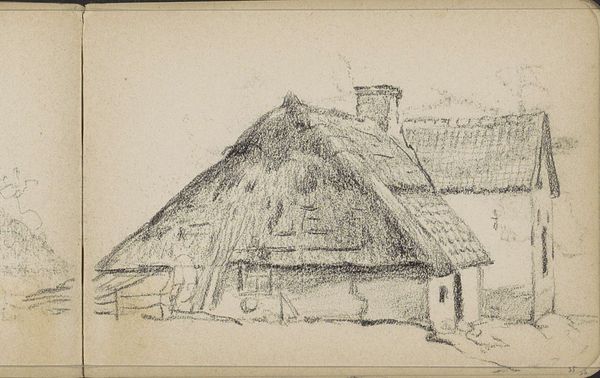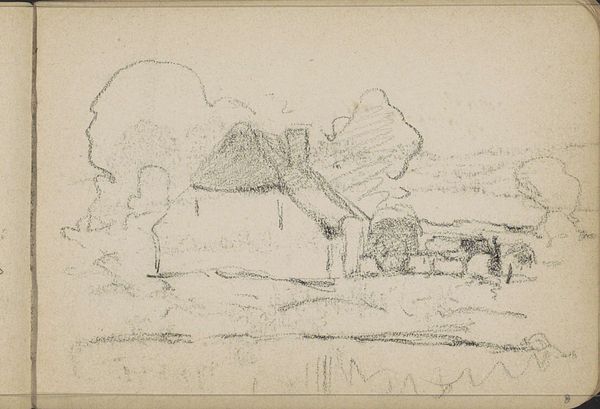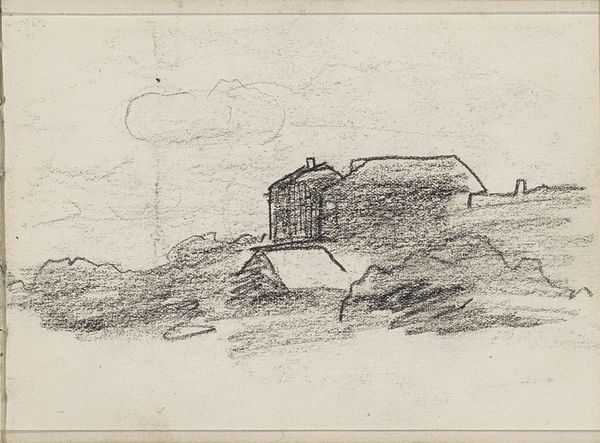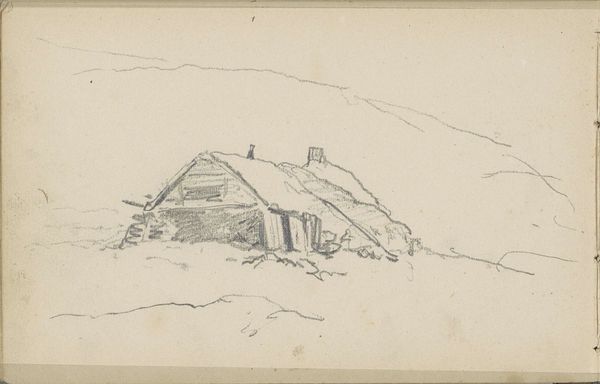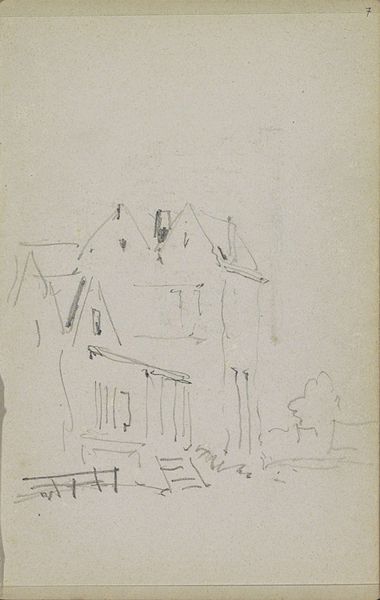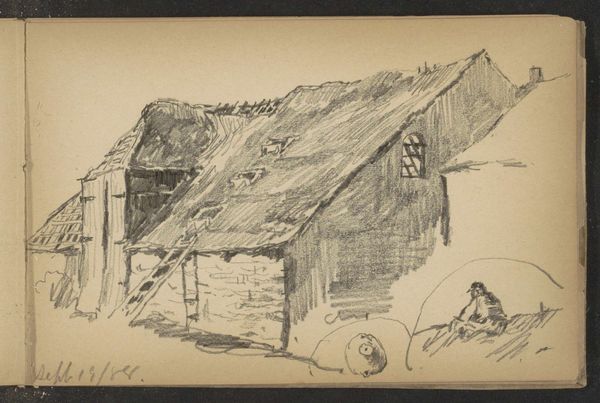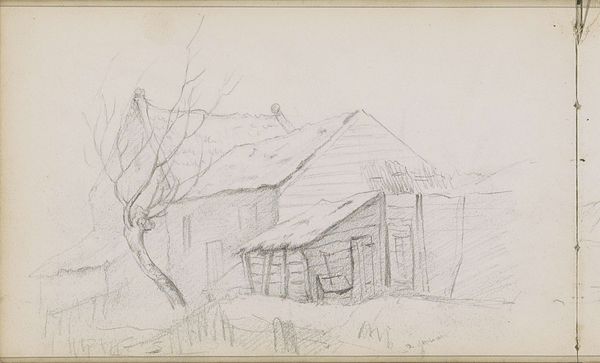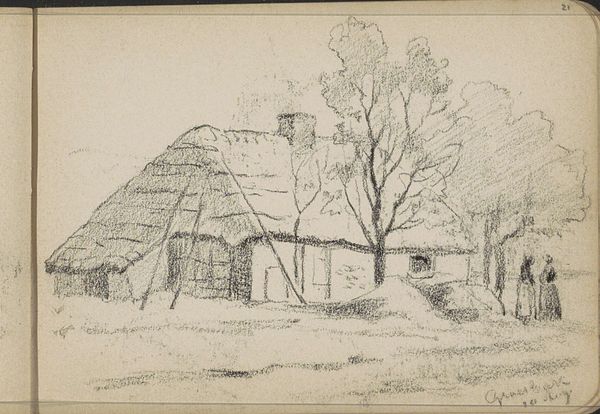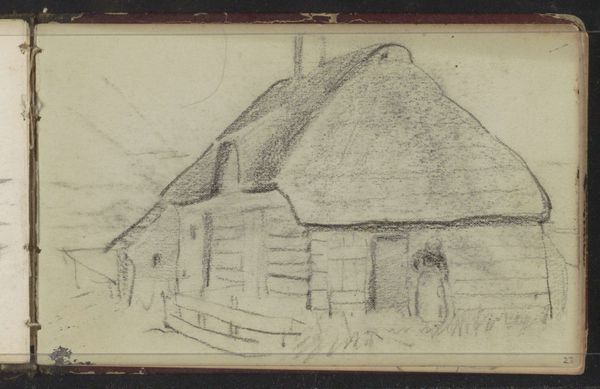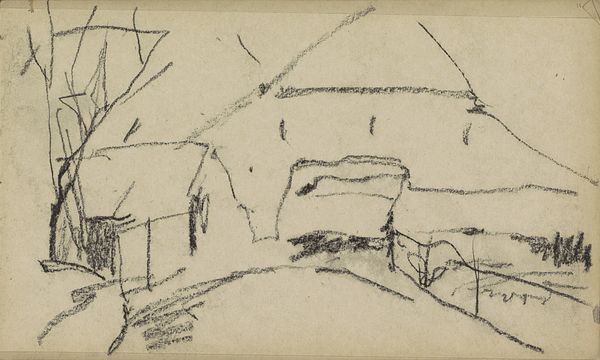
#
amateur sketch
#
light pencil work
#
pen sketch
#
sketch book
#
incomplete sketchy
#
personal sketchbook
#
ink drawing experimentation
#
pen-ink sketch
#
sketchbook drawing
#
sketchbook art
Dimensions: height 113 mm, width 159 mm
Copyright: Rijks Museum: Open Domain
Curator: Here we have "Farmhouse with a thatched roof," created by Willem Cornelis Rip, around 1896-1897. It appears to be an ink sketch, likely from a sketchbook. What's your immediate impression? Editor: Faded sepia dreams, perhaps? A place someone left behind… You know, that perfectly imperfect quality. It feels very intimate, almost voyeuristic, as if we’re peering into the artist’s private visual diary. Curator: Absolutely. Sketchbooks, especially during this period, served as vital tools. They reflect the artist's raw observations and thought processes outside the formal constraints of a commissioned piece or a salon exhibition. It’s about capturing fleeting moments, testing compositions. Editor: Fleeting moments—precisely. The hasty strokes, the implied rather than explicit details... it invites you to finish the story yourself. The incomplete sections and the focus on the farmhouse's silhouette tell much about what the artist chose to emphasize: maybe a memory of rural life? Curator: Potentially. It also offers insights into the broader cultural trends of the time. There's a noticeable shift towards valuing everyday subjects – moving away from idealized landscapes or historical scenes. Rip’s choice suggests a fascination with rural simplicity, something also visible in contemporary works by artists like, say, Van Gogh and others. Editor: Yes! It is like feeling, as opposed to stating. I also enjoy the unassuming scale. There's no grandeur here, but a humbleness that invites introspection. No statement of public, social values, more like private whispers between the artist and subject. Curator: Precisely, and it reveals the changing function of art in the late 19th century. The burgeoning art market democratized visual culture. Sketches, like this one, which could have initially served merely as preparatory work, were recognized as artworks in their own right. It’s all interconnected: The societal shift toward individual expression and consumption created an opening for this kind of intimate artwork to be both created and cherished by a wider audience. Editor: That is something to cherish indeed! For me, that kind of artwork has special value in offering new ways of connecting through its incomplete view. It also shows how personal observation becomes cultural insight when viewed with others. Curator: Very well said.
Comments
No comments
Be the first to comment and join the conversation on the ultimate creative platform.

